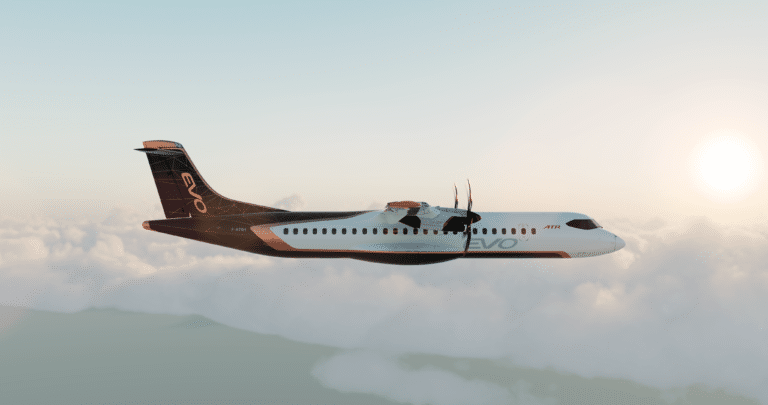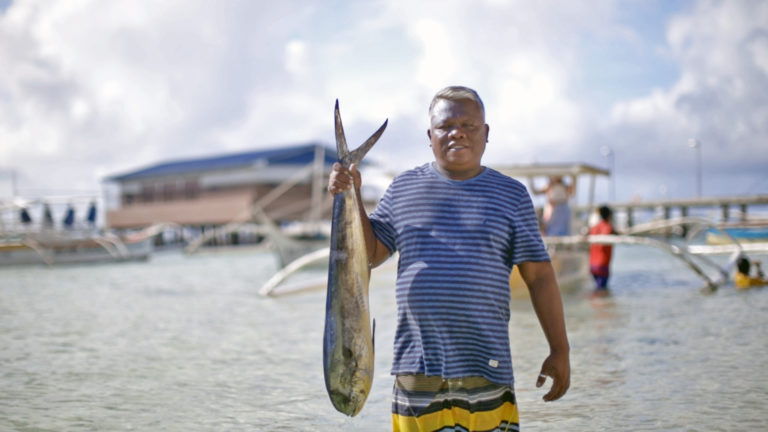Green aviation is about to take off
In December, ATR pulled off a world first by delivering a green-financed aircraft to the Swedish airline Braathens. To mark the occasion, let’s take a look at the various options being pursued by the air transport sector, all in the name of achieving more sustainable aviation.
Air travel accounts for 3% of global CO2 emissions, compared with 4% for information technology and 20% for the automotive industry. Contrary to popular belief, and despite the current trend for “flight shaming”, it is therefore not the world’s largest emitter of greenhouse gases. Cutting carbon emissions is nonetheless a priority for the commercial aviation sector, for obvious environmental reasons, and in order to remain competitive, given that customers now expect to fly greener while the high cost of aircraft fuel is a constant concern. Aviation is even the first economic sector to put in place its own international carbon offsetting and reduction scheme.
A highly motivated air transport sector
In 2016, the members of the International Civil Aviation Organization (ICAO) adopted CORSIA (Carbon Offsetting and Reduction Scheme for International Aviation), a collective resolution to reduce and offset carbon emissions. The goal: to stabilise emissions for the air transport sector as of 2020, then start to reduce them from 2035, aiming to halve emissions by 2050 based on the figures for 2005. This is no small challenge, if we consider that global air traffic is increasing by around 4% per year and is set to double in the next 20 years. From 2021 onwards, CO2emissions that exceed the average baseline emissions of 2020 will be offset by a global market scheme for purchasing offset credits. The scheme will be introduced in two phases – on a voluntary basis until the end of 2026. To date, 65 States representing almost 87% of international air traffic have volunteered to participate. As of 2027, the scheme will apply to all ICAO members. CORSIA should therefore provide a means of offsetting some 164?million tonnes of CO2 per year, the equivalent of over 80% of the forecast increase in emissions between 2020 and 2035.

Airlines are keen to get on board. One of the most committed among them is the Swedish airline Braathens Regional Airlines, a leader in sustainable aviation. The first commercial airline in the world to become environmentally certified by ISO 14001 in 2009, it became the first to use biofuel in 2018 and to offset 110% of its GHG emissions in 2019. The aim is to reduce its GHG emissions by 50% per passenger by 2025 and to become fossil-free by 2030. These goals will be reached through the acquisition of new and environmentally efficient ATR aircraft, increased use of sustainable biofuel, and even smarter traffic planning. Last November, the British airline easyJet became carbon neutral by offsetting 100% of its emissions through contributing to reforestation projects and investing in renewable energies. Air France has also just launched a programme aimed at achieving carbon neutrality for all of its domestic flights and half of its international flights within the next 10 years.
“We have made a commitment to decrease our environmental impact and the ATR is an essential part of our strategy. By replacing parts of our existing fleet of regional jets with ATR 72-600, we will emit 7,500 fewer tonnes of CO2 per aircraft, per year.”
Geir Stormorken, BRA CEO
Hybrids, an interim strategy
But we all know that carbon offsetting is an imperfect solution to a complicated problem. The best answer to the climate crisis would be to eliminate emissions entirely, through the use of electric aircraft. The race to innovate has already begun and a host of projects are under way. However, the technology is still in its infancy and has a long way to go before it can match the cost-efficiency-safety ratio of jet fuel. According to ONERA (the French national aerospace research centre), the first small-scale all-electric commercial flights (10 to 40 seats) could be a reality ten to fifteen years from now, over short distances. As for medium-haul flights (more than 70% of sales of aircraft with over 100 seats), electrically powered aircraft will not be part of the landscape in the near future – some say not until 2050 or even 2060. The main obstacle concerns batteries: even if we increase the power of current batteries five-fold, it would take over 100 tonnes of batteries to fly a medium-haul aircraft, with an empty weight of 80 tonnes.

Like their counterparts in the automotive industry, aerospace stakeholders have therefore opted to invest in hybrids, as an interim strategy while work on fully electric aircraft continues. On 20 January, thirty-three industry representatives and research organisations officially announced the creation of the Imothep consortium, which aims to carry out research on hybrid electric propulsion. « The initiative covers commercial aviation, from regional 50-seater aircraft to 150-180-seater aircraft with a range of 1,200 nautical miles [2,220 kilometres], a segment known as ‘short/medium range,’” explained Philippe Novelli, director of propulsion and environment programmes at ONERA.
Burning less and less conventional fuel
Since 2008, when the first Virgin Atlantic flight fuelled by a mixture of kerosene and biofuel took off, almost 150,000 commercial flights like that one have been completed. In May 2019, Braathens Airlines conducted the “Perfect Flight” experience in collaboration with ATR. This low-emission commercial flight carried 72 passengers on a scheduled flight from Halmstad to Stockholm on board a latest-generation ATR powered by a blend of kerosene + biofuel, thereby cutting CO2 emissions by 46% compared with a conventional flight. To achieve this, the optimisation of all aspects of the flight management process in cooperation with the airports has been critical too.
Six biofuels are currently certified by the international organisation ASTM, produced by blending recycled waste, used oils, sugars from sugar crops or biomass and conventional jet fuel, to a maximum ratio of 50%. But although we know how to produce biofuel, it is having trouble getting off the ground and only accounts for 0.04% of worldwide consumption at present. The stumbling block is financial: costing two to five times more than jet fuel, biofuel remains out of reach for most airlines.
Other potential alternatives, which have so far been cast aside, are worth looking into: according to experts, over 10% of fuel consumption, and therefore of CO2 emissions, in Europe could be avoided. How? By improving aircraft operations and the way air traffic is managed, or through electrification of the aircraft taxiing phases during ground operations and boarding bridges, for example.
Financing the transformation of aircraft fleets
All the evidence shows that commercial aviation has already embarked on an ecological transition that is set to last for decades. Given that each new generation of aircraft burns 25% less fuel than the previous generation, renewing fleets and financing their replacement is obviously a key factor. In this respect, the acquisition by the Swedish airline Braathens of the first-ever green-financed ATR-600 is a world first that ushers in a new era.














